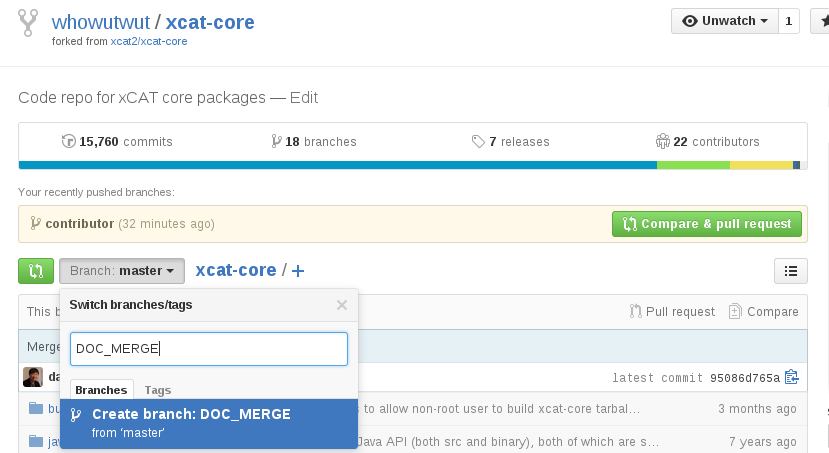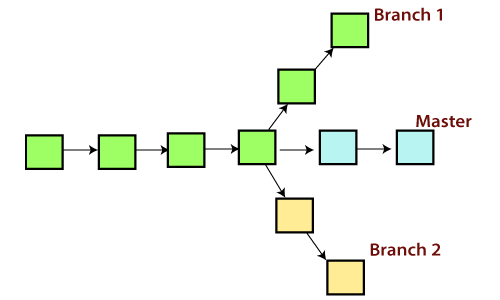

- #Create branch from master git command how to#
- #Create branch from master git command update#
- #Create branch from master git command code#
#Create branch from master git command code#
Or at least not disastrous.īy now you understand that git saves each version of your project as a snapshot of the code exactly as it was at the moment you committed it. Now it is time to start actually working with GitHub (and git) the way they are meant to be used: making changes in the project safely off to one side, and merging them back into the original project once they have proved to be correct.
#Create branch from master git command how to#
To create the pull request in your default web browser, use the -web flag.In our previous tutorials for the git version control software, we learned the essential basic commands for using git, as well as how to work with to establish a repository and push our project code to the website. gh pr create -reviewer monalisa,hubot -reviewer myorg/team-name To assign an individual or team as reviewers, use the -reviewer flag. To add the new pull request to a specific project, use the -project flag. gh pr create -label "bug,help wanted" -milestone octocat-milestone To add a labels or milestones to the new pull request, use the -label and -milestone flags. To mark a pull request as a draft, use the -draft flag.


gh pr create -title "The bug is fixed" -body "Everything works again" To include a title and body for the new pull request, use the -title and -body flags. gh pr create -base my-base-branch -head my-changed-branch To specify the branch that contains commits for your pull request, use the -head or -H flags. gh pr create -assignee specify the branch into which you want the pull request merged, use the -base or -B flags. You can use to self-assign the pull request. To assign a pull request to an individual, use the -assignee or -a flags. To create a pull request, use the gh pr create subcommand. To learn more about GitHub CLI, see " About GitHub CLI."
#Create branch from master git command update#
When you change any of the information in the branch range, the Commit and Files changed preview areas will update to show your new range. Everyone that can push to the base repository will receive an email notification and see the new pull request in their dashboard the next time they sign in. When you change the base repository, you also change notifications for the pull request. When thinking about branches, remember that the base branch is where changes should be applied, the head branch contains what you would like to be applied. References here must be branch names in your GitHub repository. You can also swap your head and base branches with the drop-down lists to establish diffs between reference points.

If the default parent repository isn't correct, you can change both the parent repository and the branch with the drop-down lists. For more information, see " About branches." For more information, see " Linking a pull request to an issue." Changing the branch range and destination repositoryīy default, pull requests are based on the parent repository's default branch. You can link a pull request to an issue to show that a fix is in progress and to automatically close the issue when someone merges the pull request. Note: To open a pull request in a public repository, you must have write access to the head or the source branch or, for organization-owned repositories, you must be a member of the organization that owns the repository to open a pull request.


 0 kommentar(er)
0 kommentar(er)
